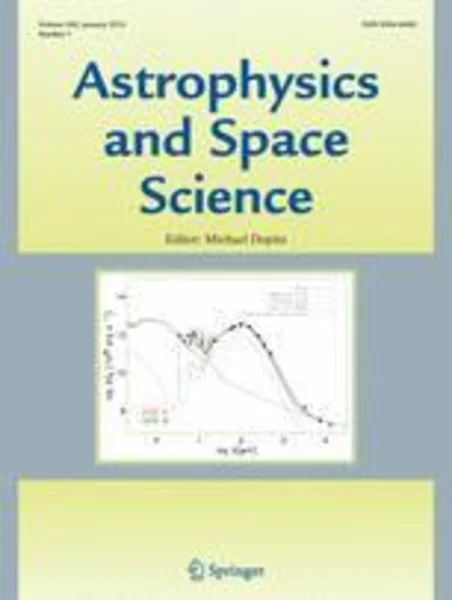-
the interaction and eruption of two adjacent filaments
جزئیات بیشتر مقاله- تاریخ ارائه: 1392/07/24
- تاریخ انتشار در تی پی بین: 1392/07/24
- تعداد بازدید: 957
- تعداد پرسش و پاسخ ها: 0
- شماره تماس دبیرخانه رویداد: -
we present a case study of two successive filament eruptions at the southeast limb of the sun observed by solar dynamics observatory (sdo) on 2012 april 19. at the initial stage of the first filament (f1) eruption, one leg of the f1 moved toward the second filament (f2) and swept the f2. the interaction between two filaments occurred. after the leg of the f1 swept the f2, it returned from northeast to southwest following the f1 expansion. during the f1 eruption, the middle of the f1 exhibited an obvious twisted structure. the rising speed of the f1 was 85.6 km/s. the partial material of the f1 fell back to the surface along the other leg of the f1 after the f1 eruption and the falling speed was 311.6 km/s. a cme was observed by soho/lasco after the f1 eruption. one of the bright flare ribbons and the dimming regions formed after the f1 eruption were found to move toward the f2. the propagation speeds of the flare ribbons were 4.7 km/s and 4.1 km/s and the propagation speeds of the dimmings were 3 km/s and 6.3 km/s. the small active region was emerging in the northern flank of the f2. the ejection and the falling plasma in the small active region produced the disturbance to the right part of the f2. when the f1 erupted, the large-scale overlying coronal loops of the f1 were pushed out toward the southeast of the sun by its expanding. during the f1 eruption, the large-scale overlying coronal loops of the f2 began to open toward the southeast. following the opening of the large-scale overlying coronal loops, the f2 became instable and began to erupt. the rising speed of the f2 was 300.1 km/s. a two-ribbon flare and a weak cme were formed after the f2 eruption. these observations evidenced that the interaction of two filaments and the opening of the large-scale overlying coronal loops caused by the f1 eruption are the most important reason that led to the f2 eruption. our observations also support the standard solar flare model.
مقالات جدیدترین رویدادها
-
استفاده از تحلیل اهمیت-عملکرد در ارائه الگوی مدیریت خلاقیت سازمانی و ارائه راهکار جهت بهبود
-
بررسی تاثیر ارزش وجوه نقد مازاد بر ساختار سرمایه شرکت های پذیرفته شده در بورس اوراق بهادار تهران
-
بررسی تأثیر سطح افشای ریسک بر قرارداد بدهی شرکت های پذیرفته شده در بورس اوراق بهادار تهران
-
بررسی تأثیر رتبه بندی اعتباری مبتنی بر مدل امتیاز بازار نوظهور بر نقد شوندگی سهام با تأکید بر خصوصی سازی شرکت ها
-
تأثیر آمیخته بازاریابی پوشاک ایرانی بر تصویر ذهنی مشتری پوشاک ایرانی (هاکوپیان)
-
شبیه سازی تبخیر با استفاده از مدل های فازی عصبی و مقایسه آن با مدل های سری زمانی (مطالعه موردی: دشت جم)
-
کاربرد جدول عمر در برآورد طول عمر و عوامل موثر بر آن در سرطان مری
-
تأثیر تحریک الکتریکی با فرکانس پایین بر اکتساب کیندلینگ و انتقال سیناپسی در شکنج دندانه دار موش صحرایی
-
گزارش یک مورد سندرم نورولپتیک بدخیم ناشی از مصرف ریسپریدون در افراد با ریسک پذیری پایین
-
ranking of the competitive service quality factors using fahp and fuzzy topsis techniques
مقالات جدیدترین ژورنال ها
-
مدیریت و بررسی افسردگی دانش آموزان دختر مقطع متوسطه دوم در دروان کرونا در شهرستان دزفول
-
مدیریت و بررسی خرد سیاسی در اندیشه ی فردوسی در ادب ایران
-
واکاوی و مدیریت توصیفی قلمدان(جاکلیدی)ضریح در موزه آستان قدس رضوی
-
بررسی تاثیر خلاقیت، دانش و انگیزه کارکنان بر پیشنهادات نوآورانه کارکنان ( مورد مطالعه: هتل های 3 و 4 ستاره استان کرمان)
-
بررسی تاثیر کیفیت سیستم های اطلاعاتی بر تصمیم گیری موفق در شرکتهای تولیدی استان اصفهان (مورد مطالعه: مدیران شرکتهای تولیدی استان اصفهان)
-
تأثیر عوامل عاطفی بر واکنش های رفتاری مشتری به تبلیغات شخصی شده آنلاین با نقش میانجی مولفه های نظریه انتخاب عقلایی
-
بررسی نقش تحقیق و توسعه در ویژگی های کارآفرینی کارکنان شرکت ایران خودرو شهر تهران
-
ملاک های سلامت معنوی در پنج ساحت انسان مبتنی بر آموزه های قرآن
-
ارتباط تعامل آمیز سبک زندگی اسلامی با ویژگی های شخصیتی
-
دانشگاه، اخلاق مداری و کارآفرینی




سوال خود را در مورد این مقاله مطرح نمایید :